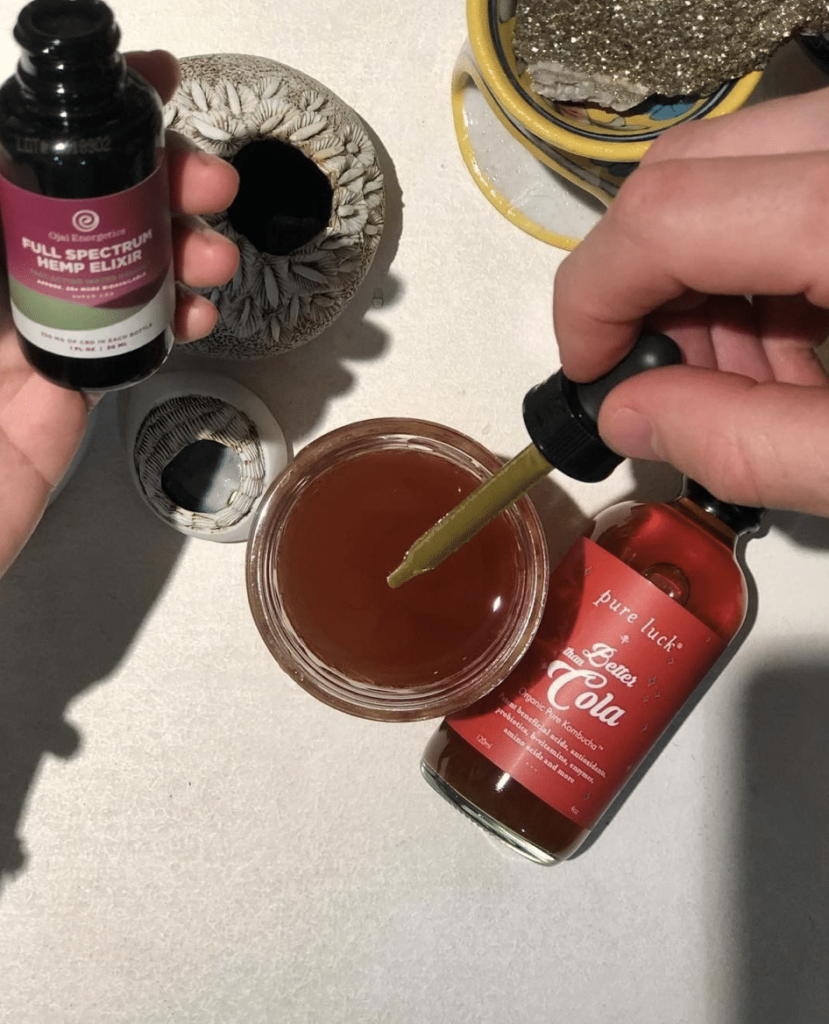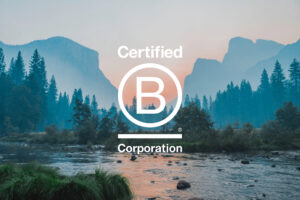CBD, an active chemical found in the cannabis plant, has been growing in popularity over the last decade. As legal access and media attention have alerted more people to its potential benefits, more and more people are trying it out and incorporating it into their wellness routines.
But now a new version of CBD has entered the market – water-soluble CBD. This new innovation is an appealing option for many CBD users because of its fast-acting effects, higher bioavailability, and the potential to be mixed into any drink on the go.
But water-soluble CBD has also left some asking questions: What is water soluble CBD? How is water-soluble CBD made? And what makes it different from other types of CBD oil that are being sold?
Wondering about the answers to these questions, and all about the science and practical aspects of using water-soluble CBD? This primer and interview with Will Kleidon, Ojai Energetics’ Founder and CEO will give you the simple overview you need to understand and navigate the new world of water-soluble CBD.
What Makes Water Soluble CBD Different?
Water-soluble CBD has rich bioavailability
The biggest reason why water-soluble CBD is different from other forms of CBD can be found right there in the name – it’s water-soluble. And that simply isn’t the case for other types of CBD, or the other cannabinoids, which are all-natural chemicals found in the cannabis plant. As Will Kleidon explains it. “Cannabinoids are fat-soluble, so hemp extracts or cannabis extracts are going to be naturally fat-soluble.” This means that they dissolve and infuse into fats but can’t do the same with water. Like when you pour oil and vinegar together in a jar, the two can coexist but they can never fully blend together.
When using edible CBD products, this is important. “The problem is that they have very poor bioavailability,” explains Kleidon. “Meaning, that much of what is consumed cannot be used functionally by the body.” This has to do with how our body processes fats.
As it turns out, our body has a natural gatekeeper to block fats from easily getting into the blood or the lymphatic system. Once something makes its way into our system, it can travel very readily across the blood-brain barrier and have systemic effects on the body and brain. To help protect against harmful or toxic agents, the body has developed this gatekeeper, which is a water layer over the mucosal membrane.
Water-soluble helps dissolve easily in the bloodstream
Since fats can’t mix with water, this layer of water keeps fats from easily making its way into our system when processed through the digestive system. But sometimes there are compounds in fats that the body wants to utilize as well. When this happens – for example with the cannabinoids from cannabis – our body has to actually encapsulate the fats in tiny water bubbles to let them pass into our blood. These tiny bubbles are called micelles, and they carry fat-soluble compounds like cannabinoids right through the water layer so they can actually impact our system.
Unfortunately, this process isn’t very efficient. As Kleidon explains, “In the best-case scenario, 90% of the cannabinoids eaten are destroyed in that digestive process.” On average only 6% of these cannabinoids are absorbed into the blood after being eaten and digested. The rest are destroyed by enzymes and stomach acid during digestion.
That is a big loss when it comes to all those active cannabinoids that could potentially be used.
The body is also not very fast when it comes to processing fat-soluble CBD. It takes about 30-40 minutes for this process to occur. But water-soluble CBD solves this problem of wasted cannabinoids by helping the body to process much more of these active cannabinoids.
By mimicking the same natural process of encapsulating CBD in water micelles, CBD can become water-soluble before it is digested. In this form, the CBD is able to pass through the water layer at much higher concentrations – lowering the amount of CBD that needs to be taken to gain its benefits.
As Kleidon explains, “now they’re allowed to pass the gatekeeper through the water layer into the bloodstream, at which point they then break out of those little vesicles and then travel wherever they want to go on the body.”
The result is a CBD product with high bioavailability and fast-acting effects, which can also be taken easily in your favorite drink, or even absorbed directly through the skin as a transdermal topical.
Is Water-Soluble CBD Better Than CBD Oil?
There are many practical benefits of using CBD instead of regular fat-soluble CBD.
Water-soluble CBD has a much higher bioavailability than CBD oil
One main benefit, as we’ve seen above, is that water-soluble CBD has much higher bioavailability. This is important because studies on CBD generally show effective treatment ranges starting around 500mg’s of CBD. But most CBD oil products have dosing starting at 5-10mg’s. To really get fully effective dosing, people would need to ingest far more CBD oil than most are using.
But doing this is easier said than done. “It’s cost-prohibitive, and you’re eating copious amounts of oil,” explains Kleidon. But with water-soluble CBD, much more of the CBD is available to be processed so you don’t need as much. “You could get bioequivalences of effective dosage ranges very, very easily, and quickly,” says Kleidon. “You don’t have to drink the whole bottle, and it’s cost-effective.”
Water-soluble CBD saves money
In practical terms, the high bioavailability of water-soluble CBD means lower cost, improved potency, and less consumption of other oils. And Ojai Energetics method improves bioavailability even beyond other water-soluble CBD. While studies need to be done on CBD, research on curcuminoids (which share almost the exact same molecular weight and solubility profile as cannabinoids) can give us some idea of bioavailability ranges with different methods.

These studies show that curcuminoids become 8 times more bioavailable when put into liposomal formulations, but when put into colloidal formulations it becomes 128 times more bioavailable!
While theoretical, this gives us some idea of how CBD might be absorbed with these different methods. This would mean that to achieve the equivalent of a 500mg dose of fat-soluble CBD, someone would need to consume less than 4mg of colloidal water-soluble CBD. To achieve the same dose with liposomal CBD, they would require more than 60mg of CBD.
Water-soluble CBD can be mixed easier
To add to the benefits, Ojai Energetics water-soluble CBD can also be mixed in with liquids for easy and enjoyable consumption, and it starts working within 30 seconds. As Kleidon puts it,
“Being able to affordably and effectively get an active dose is really important. And then with onset time, being able to get a rapid response is awesome.”
In other words, water-soluble CBD has big benefits for consumers – especially when you use a colloidal formulation. From high bioavailability to rapid onset, to the ease of being able to mix it into your drinks, or use it transdermally, there are so many reasons to explore using water-soluble CBD.
How Is Ojai Energetics’s Water Soluble CBD Made?
Using certified organic plants
There is more than one way to make water-soluble CBD. But Ojai Energetics is the only company to make CBD water-soluble using only certified organic plants. Their process, called colloidal nanoemulsion or swollen micelle encapsulation, emulates the natural encapsulation process that happens in the gut, encasing CBD in tiny water bubbles or micelles.
“That skyrockets the bioavailability,” explains Kleidon. “The second that it comes into contact with the mucosal membrane, it gets absorbed into the bloodstream immediately and then transfers out of those little vesicles. It bypasses that entire destructive process.”
Using colloidal formula instead of liposomes methods
While they use their patented all-organic colloidal method to accomplish this; another method that is frequently used to make water-soluble CBD is using liposomes. But Kleidon says that Ojai Energetics has good reasons why they don’t use this method, and they are reasons that consumers should be aware of when purchasing their own CBD product.
For one thing, liposomes were actually originally designed to carry water-soluble compounds like Vitamin C, so they aren’t ideal for fat-soluble compounds. They also have a larger particle size than micelles, which can be a factor that reduces bioavailability. While liposomal substances are more bioavailable than fat-soluble substances on their own, it is much less bioavailable than when those substances are encapsulated in organically derived micelles. Ojai Energetics issued patents cover all formats of encapsulated cannabinoids however they choose to provide the safest and most effective; a certified organic colloidal delivery system.
For those interested in using natural or organic products, liposomes also aren’t the best option. You can’t make a liposome with organic materials, so they have to be created or modified synthetically. In some cases, this process may involve questionable ingredients like petroleum-based chemicals called PEG’s.
To add to this, liposomal delivery of CBD has a longer onset compared to colloidal delivery. It usually takes 15-20 minutes for onset with liposomes, while the colloidal formula from Ojai Energetics only takes around 30 seconds to begin working. Ojai Energetics issued patents cover all formats of encapsulated cannabinoids however they choose to provide the safest and most effective; a certified organic colloidal delivery system.
Now that you know the difference between water-soluble CBD and CBD oil, check out the choices to make Ojai Energetics part of your daily health and wellness routine.






